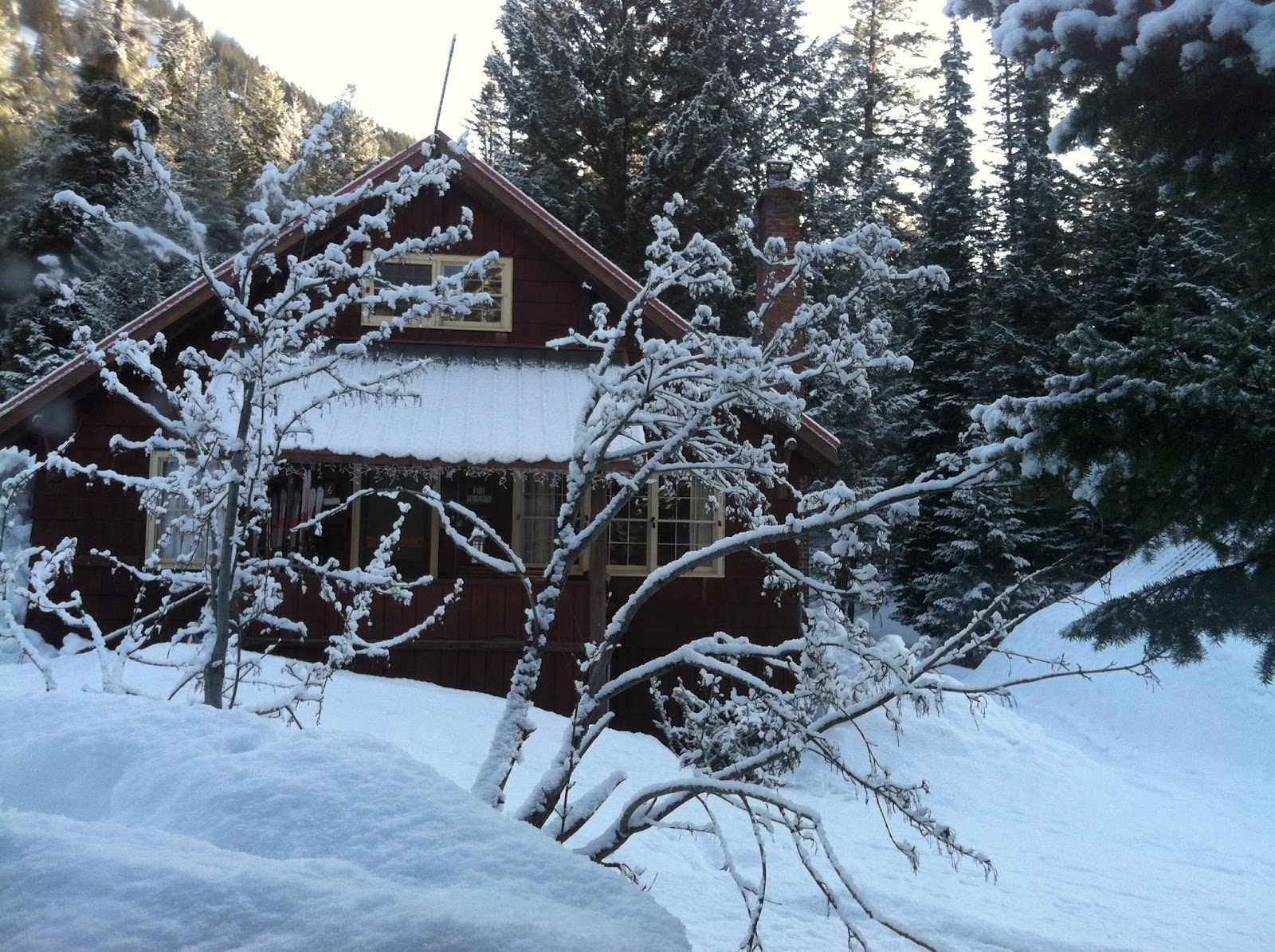 |
| Chalet 6 from Chalet 14 |
 |
| Chalets 10, 9, & 8 from Chalet 14 |
About half of the windows therefore remain clear of snow, and half are obscured. We can be thankful that the original designer(s) did not use an inappropriate kind of roof form here (say, a fully hipped roof), or all the windows might get covered. To be sure, much of the deepest accumulation off the eaves happens on the uphill side of the buildings: the downhill sides have a greater elevation change between grade and window sill. And given the village is on the north side of the valley, those windows that remain less obstructed are on the sunnier south sides. A happy coincidence? I think not.
I have inferred, but not yet explicitly stated that the rooms on the main floors of the Chalets have windows on two sides. [The upper floors have windows only at the gables, as they usually do not have dormers (at least on the smaller chalets).] This is a rather wonderful daylighting strategy, and enables us to have good light without turning the lights on - especially noticeable in winter when the snow bounces a lot of light into the buildings even on overcast days.
I should also mention that Chalet 14 is the least well day-lit building of all the chalets: it sits in a bowl shaded by trees, and it is still wonderful.
This configuration of having windows on two sides of a room is an important traditional design strategy. In A Pattern Language, the authors state:
The importance of this pattern lies partly in the social atmosphere it creates in the room. Rooms lit on two sides, with natural light, create less glare around people and objects; this lets us see things more intricately; and most important, it allows us to read in detail the minute expressions that flash across people's faces, the motion of their hands . . . and thereby understand, more clearly, the meaning they are after. The light on two sides allows people to understand each other.In a room lit on only one side, the light gradient on the walls and floors inside the room is very steep, so that the part furthest from the window is uncomfortably dark, compared with the part near the window. Even worse, since there is little reflected light on the room's inner surfaces, the interior wall immediately next to the window is usually dark, creating discomfort and glare against this light. In rooms lit on one side, the glare which surrounds people's faces prevents people from understanding one another.
Pattern 159A Pattern Language was published in the middle 1970s and presented notions about the built environment that were successful because they resolved or mitigated social tensions. It is more than just an architectural cookbook, it is a way to start thinking about design wholistically and humanely. The primary author, Christopher Alexander, went on to write a series of books that quite clearly used A Pattern Language as a point of departure, culminating in the publication of The Nature Of Order. The notion of pattern languages influenced other fields as well, especially software design. But the Pattern Language remains the most accessible of the set. What it does is lead us from prosaic kinds of buildings to ones that become poetical in density of meaning, interpretation, and experience. It is very cost-effective design, too, because we start getting more bang for our buck. Chalet 14 has to have windows - by having them on two sides of each room, we get the light that makes this a place apart. But it is also anchors this building deeply and securely to this place.
Don't take my word for it - check out a copy or purchase a copy and have at it. You will recognize why you like some places and why you don't like other places. It will make you think differently about the next house you want, or how you want to remodel your present house if you like the location. If you don't want to pop for the book, think about subscribing to the website - the link to the quote will take you there.
Again, from Pattern 159:
When they have a choice, people will always gravitate to those rooms which have light on two sides, and leave the rooms which are lit only from one side unused and empty.
Therefore:
Locate each room so that it has outdoor space outside it on at least two sides, and then place windows in these outdoor walls so that natural light falls into every room from more than one direction.
| Pattern 159 |
By mid-morning today, the fresh snow had come off the trees and was dripping down off the edges of the eaves.

No comments:
Post a Comment